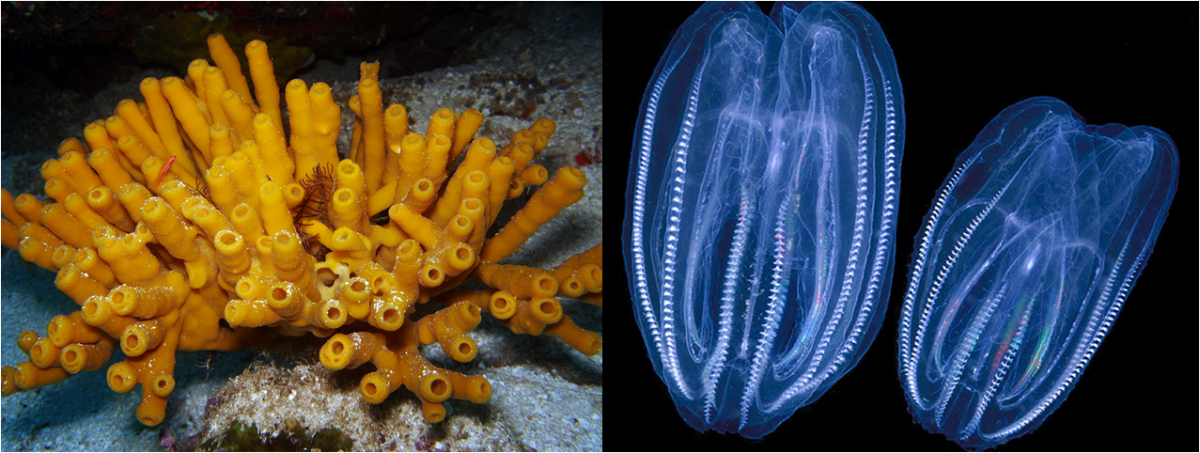By Natasha Fraley

On Shape of Life, we present sponges as the first animals. But recently several scientists make a case for ctenophores (common name comb jelly) being the first animal. As of today scientists still don’t agree on the issue. This is an example of “science in action” where new research and technologies call into question long held science. This is basically how science works. The evolving nature of science will have a major influence on science teaching in the classroom.
It is indeed true that ctenophores have many features that other animals don’t have. They capture prey with sticky cells unique to the group. The name ctenophore comes from the rows of cilia (ctene comes from the Greek for “comb-bearers”) used to move, sense the world, and to create currents. But most importantly, they have muscles and a relatively advanced nervous system that works unique to them. Perhaps ctenophores were on a separate evolutionary pathway.
In 2008 Casey Dunn, a Brown University biologist, compared genes from twenty-nine animals and several phyla and concluded that ctenophores, not sponges, were the first animals. This set off a controversy among scientists. Since then, advances in DNA sequencing in the last decade have yielded more than a dozen conflicting genetic analyses supporting either the ctenophores or the sponges as first animals. As it turns out, not only is it important which genes you choose to analyze and which organisms you compare, but the actual methods of comparison are key.
Even though sponges are so different from other animals, some scientists still believe a sponge-like creature was the first animal because of their simplicity. Like all animals, sponges produce sperm and eggs, and have a whole suite of animal-specific genes. Although they lack neurons, sponges have genes that code for chemical signaling and thus the genetic building blocks for the nervous system, which later animals evolved. Sponges also have a tissue level of organization typical of all animals. Therefore, it makes ecological sense that the first animals evolved on the ocean bottom and fed by filtering nutrients. Scientists assume that lifting off the ocean floor was a later evolutionary development.
Dr. Steve Haddock (our Featured Scientist) believes ctenophores were the first animal based on genetic analyses. But Steve acknowledges that scientists are split; some challenging the methods of those analyses. To solve the mystery, scientists need to sequence more genomes from diverse sponges, ctenophores and other animals. Haddock states, “It becomes easier if you think of sponges as the weirdos, which have lost traits we associate with animals. There is a tendency to think everything must become more complex, but things go both ways. Additionally, if ctenophores are not the first to diverge from the rest, they are somewhere in that first group, and have a lot of features that make them very different from other animals.”
‘‘Science works on the frontier between knowledge and ignorance. We’re not afraid to admit what we don’t know. There’s no shame in that. The only shame is to pretend that we have all the answers.’’ (Neil deGrasse Tyson, Cosmos: A Spacetime Odyssey)
















